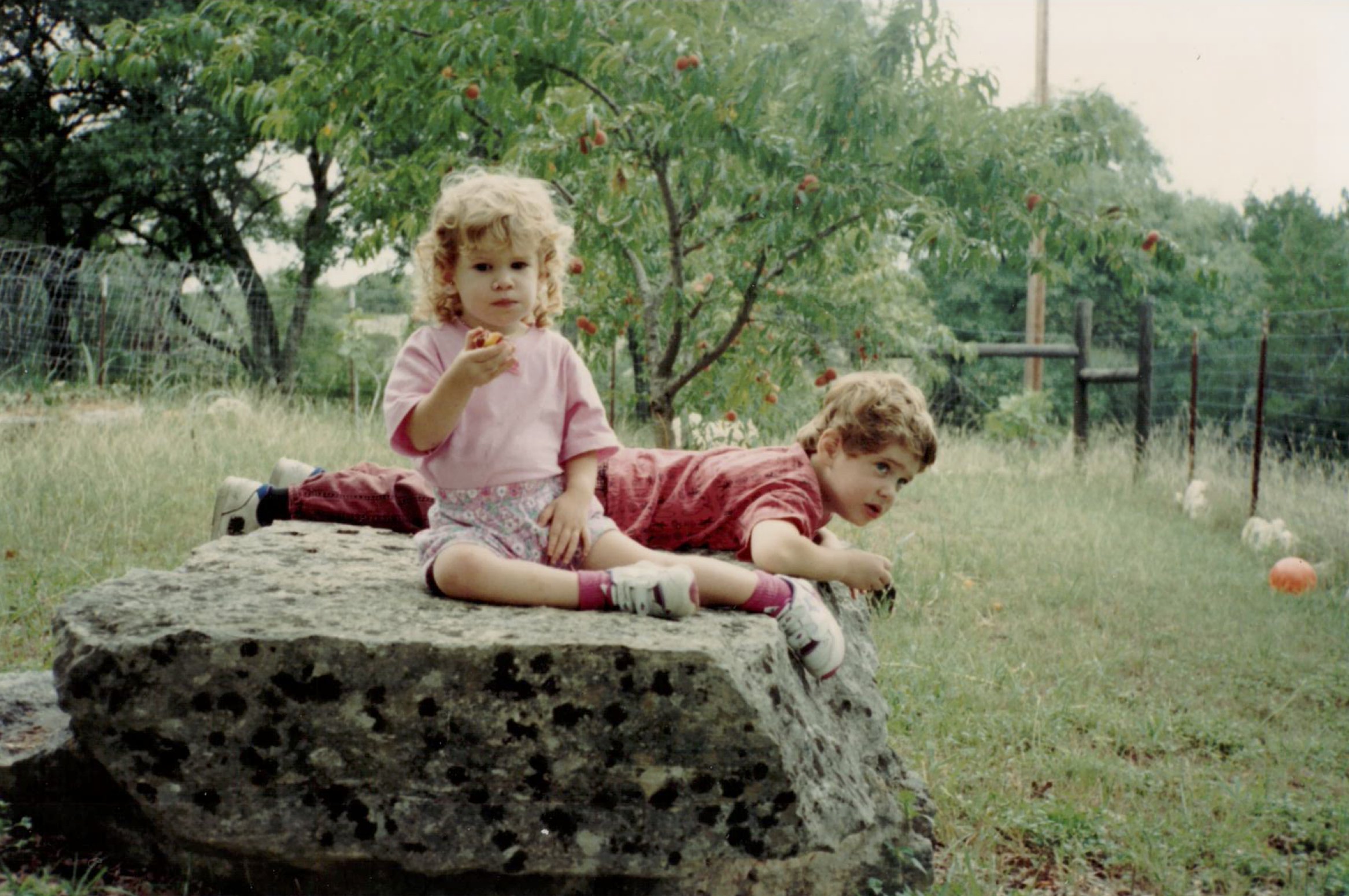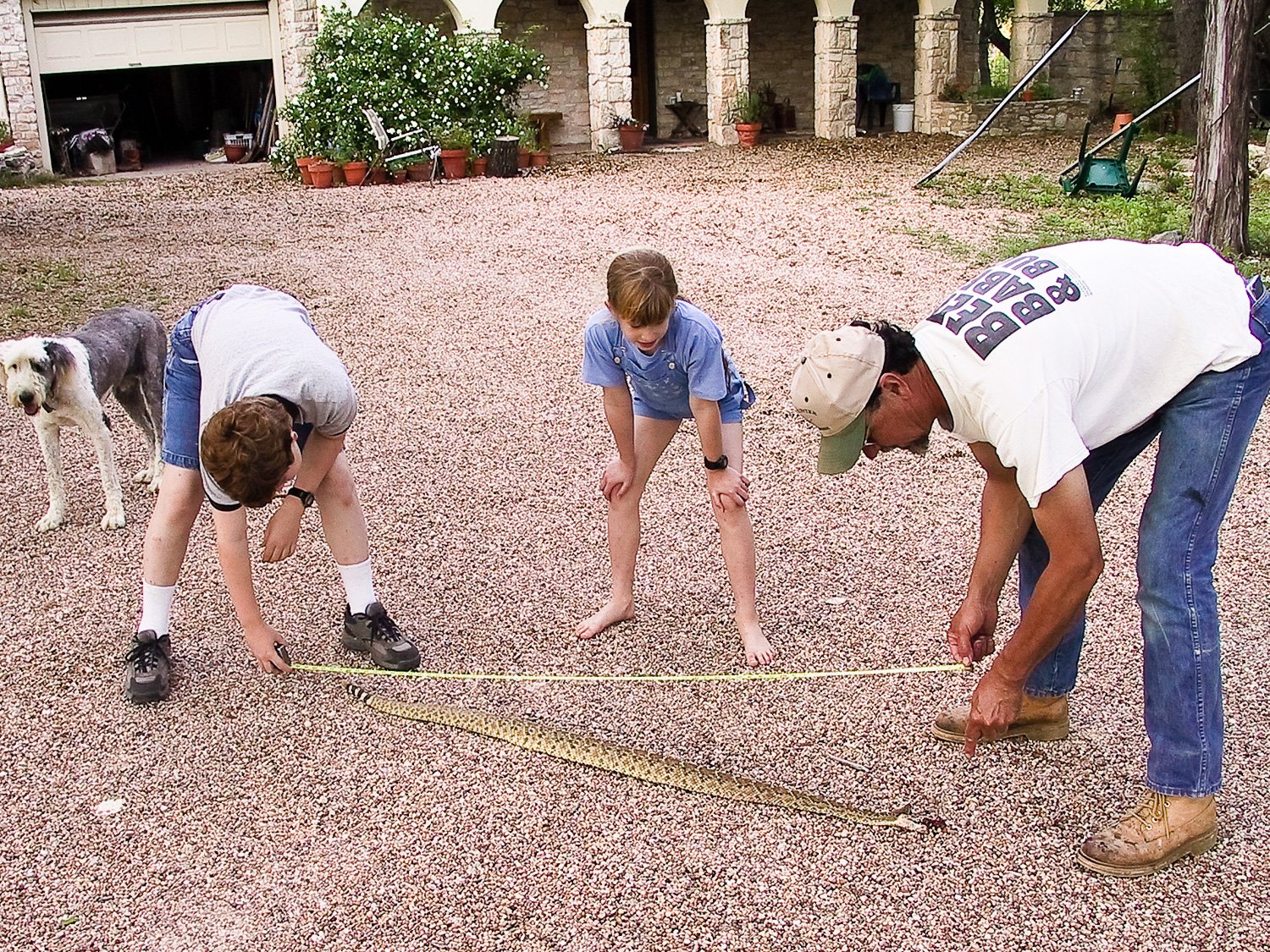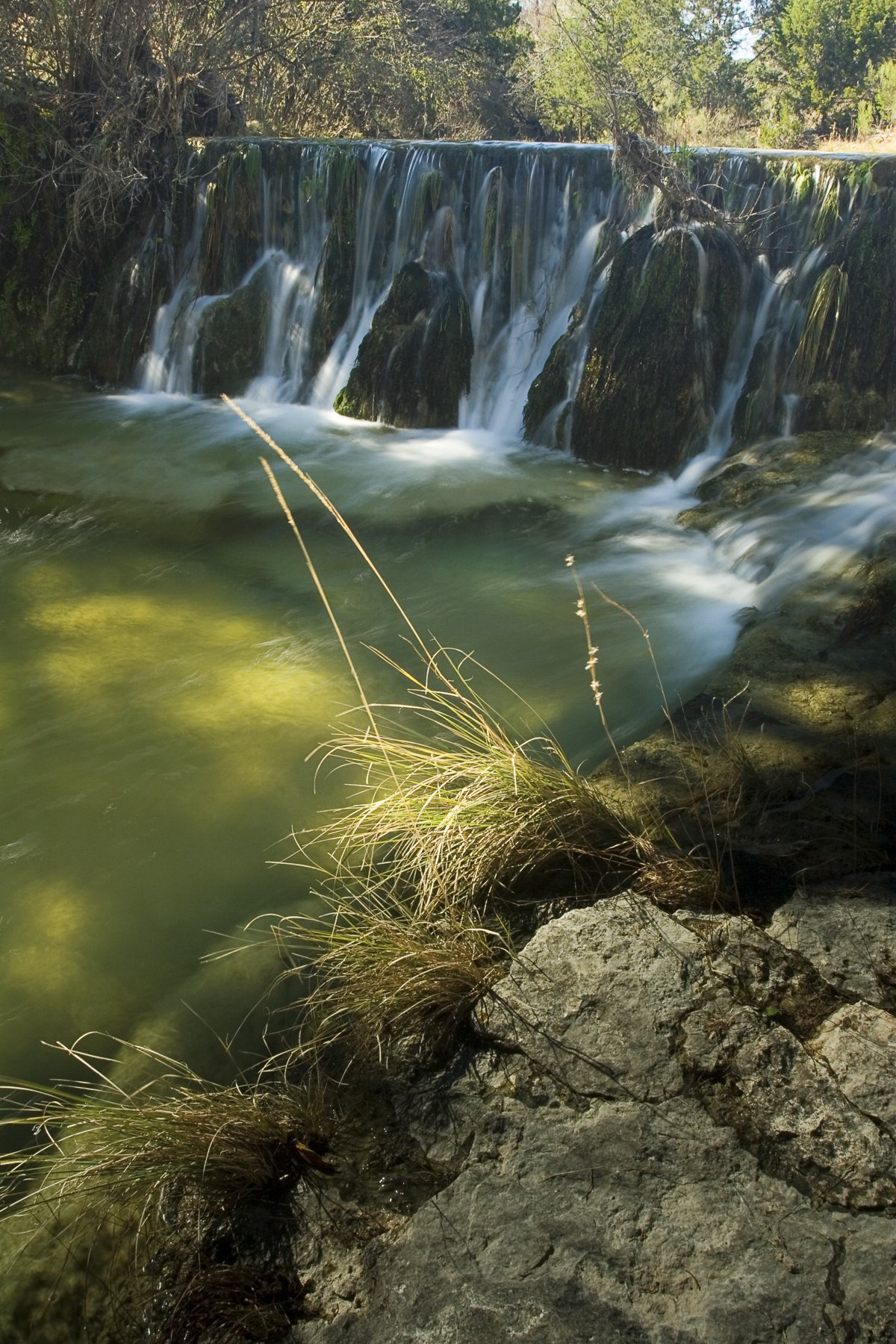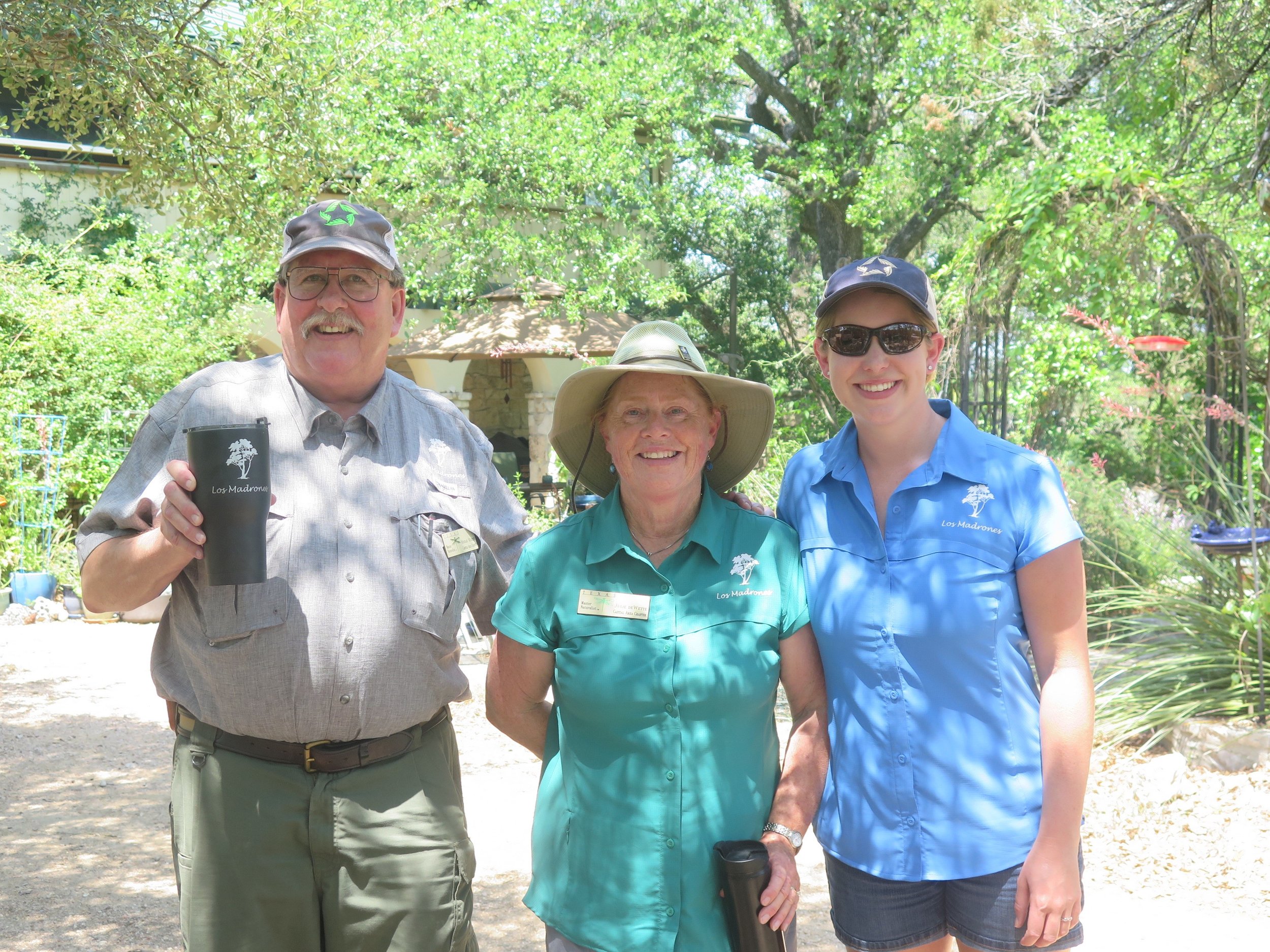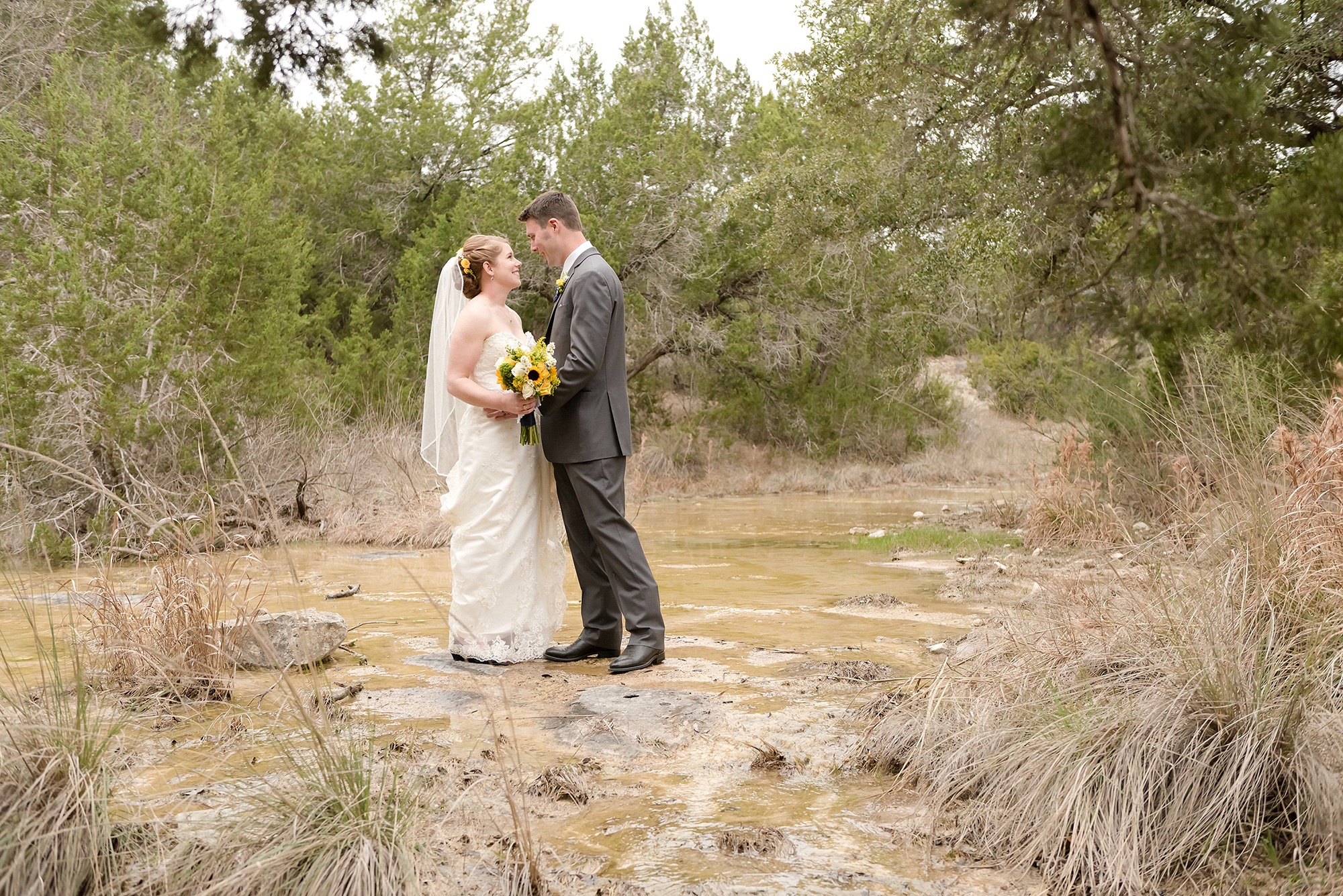Two Generations of Learning on the Land
“I am speaking of the life of a man who knows that the world is not given by his fathers, but borrowed from his children; who has undertaken to cherish it and do it no damage, not because he is duty-bound, but because he loves the world and loves his children… ” – Wendell Berry
TLC Landowner Mike Murphy and TLC board member Michaela McCown look back on the natural heritage of their family ranch, Los Madrones in the Hill Country, and how a passion for the land has evolved across generations to preserve this incredibly special place forever (originally printed in our Texas Forever magazine in Fall 2019).
Mike Murphy and Julie de Wette at Los Madrones with son, Nicholas, and daughter, Michaela in 1991.
Written by Mike Murphy, Owner of Los Madrones
Born in Houston in 1952, I was the first of three boys our parents Patsy and Mike Murphy would rear in the southwest part of the state’s largest city, population roughly 750,000 in the mid-50s. Our growing-up experience proved mostly urban, punctuated by frequent trips when our parents would haul the family for a weekend stay at a cabin they owned on Lone Man Creek near Wimberley.
After about 10 years of such trips, my father, a home builder and realtor, decided he wanted to live AND work in the Hill Country. He searched out and bought a ranch near Dripping Springs in 1966 and moved our family there in 1967.
Though historically operated as a cattle and goat ranch, my father chose to sell the 100+ herd of Angora goats and focus on running the ranch for cow-calf production. The three Murphy brothers all started school in Dripping Springs, a largely rural community of about 500 at the time.
School proved very different than our previous school; with more limited offerings but a new-to-us class called vocational agriculture that allowed us to combine classroom instruction with hands-on learning at area ranches, including our own. One of my fondest memories of that time was collecting 40 grasses and forbs to make my personal plant binder/reference.
We learned about raising livestock, too, and enjoyed lots of experience while working our 35 or so head of cattle, a mix of black Angus, Hereford, and crosses of the two breeds. Our father succumbed to a heart attack in 1976, so it fell to the brothers to continue the livestock operation.
We wound up selling the entire herd in the mid-1980s when all three of us made life commitments elsewhere. A nearby friend leased the pasturage from us to run a small herd of TX Longhorns. My wife Julie and I moved to the ranch before we had our first child, Nicholas, in 1988; but we continued to lease it for grazing. Our second child, Michaela, arrived in 1991.
In 1996, my two brothers decided they wished to sell their part of the 800-acre ranch; and after some complicated calculations, Julie and I purchased enough acreage from my middle brother Chad to allow us to wind up with roughly half the former ranch after the sale.
Around this time, the state created a new land valuation for agricultural entities to consider, aimed at promoting wildlife conservation. Julie and I explored this option and converted our place to wildlife in 2000. We discontinued leasing the pasturage and concentrated on doing what we could to help the land recover from years of near-continuous overgrazing.
New practices included controlling feral animals, seeding native grass and forbs, and annual bird surveys. We continued with the ever-present chores of juniper control and soil erosion prevention.
After seeing a neighbor put their property, the Shield Ranch, into a conservation easement, Julie and I began searching for some way to do the same with our our land, Los Madrones. When Travis County issued a public call for area property owners to apply for easements in 2012, we submitted our application. As part of the application process, we learned about Texas Land Conservancy and partnered with TLC for our conservation easement application.
Los Madrones hilltop vista by Nicholas Murphy.
The process stretched out over a number of years; but it successfully concluded in 2018 when we, TLC, Travis County, and the NRCS (an arm of the USDA) signed a contract binding us and future owners of the property to agreed-upon uses of the land. We could use it as we always have, pass it on to our children, or even sell it; but the property could never be divided in any fashion, nor developed.
Now as Julie and I enter our “twilight” years, we’re thrilled to know the land will remain much as we’ve always enjoyed it; and it won’t change substantially in years to come. Even as the city of Austin steadily encroaches in our area, Los Madrones will remain an undeveloped oasis with open grasslands and protected habitat for wildlife.
The Next Generation
Written by Michaela McCown, TLC Board Member
Growing up, I didn’t realize how good I had it. I knew I was blessed, but I certainly did not fully realize (or appreciate) how unusual my childhood was until I moved away from home. I grew up on Los Madrones, a 400-acre property in the heart of the Hill Country outside of Dripping Springs. My experiences growing up on the property shaped me into the individual I am today: someone who loves being outside and whose career and passion is centered around teaching others about nature and the environment.
Granted, there were some “rough” times. Like when my brother, Nicholas, and I had to walk home from the gate (it was a mile from the house) because we had been fighting in the car. Or having to lop cedar to account for bad behavior or because you needed a few extra dollars to buy that Christmas gift. Almost stepping on a copperhead snake coming down the stairs in the house was not a childhood highlight either. I will never forget the time Nicholas locked me in the chicken coop before school one day (and then wrote a poem about it for English class). And please don’t ask me about the time I accidentally sat on a porcupine needle that had been removed from a dog’s face and was errantly placed on a nearby chair.
All in all, the challenges of growing up in the country were vastly surpassed by the amazing experiences, knowledge, and memories that I acquired. As a kid, I loved taking the circuitous route down to the creek with Nicholas to have mud fights, swim, catch tadpoles, and get scratched up hunting for ripe dewberries. Summers were filled with afternoons down at the swimming hole playing our own invented game of “shark”. As I grew older, I began to appreciate the time spent engaged in more menial tasks: collecting kindling and chopping firewood, driving with Dad around the ranch to refill watering and feeding stations, and taking the ATV to go check on the pig traps. In high school, I would usually finish my homework at school so when I came home, I could spend hours hiking around the property, looking for undiscovered nooks and crannies and admiring the flora and fauna that revealed itself to me. As I grew up in this special place, where rooting armadillos and loud chuck-wills-widows would wake you up in the middle of the night right outside your window, my heart and passion for the environment would grow as well.
In 2000, my family decided to change from an agricultural valuation to a wildlife valuation and the cattle were removed from the property. As a family, we began to engage in more wildlife management on the property: conducting annual bird counts, seeding for native grasses and wildflowers, implementing brush control practices, and maintaining watering stations for wildlife. This further excited my passion for the environment and was one of the turning points where I decided to pursue a degree in Wildlife & Fisheries Sciences.
About the time I left to pursue my education at Texas A&M University, my family started to discuss potentially implementing a conservation easement on the property. Since my dad’s family moved to the ranch in the 1960’s, vast development had occurred in Austin and population growth was quickly flooding out into this part of the Hill County we so dearly loved. The idea of one day someone building on the land that had given us all these wonderful memories was frankly horrifying. Texas Land Conservancy offered my family a measure of security through the conservation easement that was finalized in 2018 – we can now be confident that our land will be protected in perpetuity.
The creek that has given us countless hours of swimming memories, the tree where my husband and I were married, the land which provides numerous species with safe habitat, will all be protected forever. I hope that one day I will be able to move back and raise a family on the land that shaped me into who I am, but I am content knowing that, at the very least, many other Texans will continue to benefit from and enjoy this protected land. Despite the immense population growth occurring in Texas, many landowners across the state, including my family, are helping to protect natural lands and the ecosystem services they provide for future generations of Texans. Through the help of TLC and our members, Texans will continue being shaped into people passionate about wildlife and the environment because there will always be protected land for them to enjoy.





